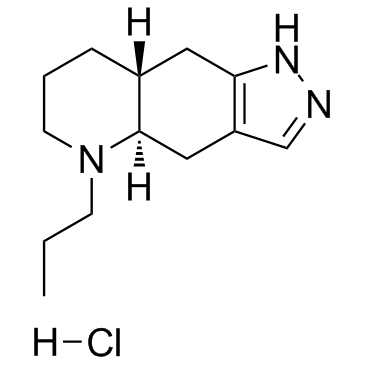| In Vivo |
DA content is left brain biased across groups, and although this asymmetry appears greater in saline controls than all drug-treated groups, there is not a significant interaction between Side and Group. When each side is considered separately it can be seen that in the left brain structure, DA levels progressively decrease with chronic quinpirole treatment, with the QQ rats differing significantly from saline controls. In contrast, right cortical DA levels are only altered significantly (increased) by acute Quinpirole. It can be found that DOPAC levels are also left brain biased across groups. However, no significant Group or interaction effects are found. Rats receiving acute Quinpirole show a selective increase in DA content and decrease in turnover ratio, relative to either saline controls or the QS group. Sensitized (QQ) rats however, have elevated DOPAC levels in comparison to the acute quinpirole group. In striatum as well, all three measures of DA function differed significantly across groups (DA, F3,33=6.27, P=0.0020; DOPAC, F3,33=7.98, P=0.0004; turnover ratio, F3,33=16.85, P<0.0001). In the acute quinpirole rats, both DOPAC and turnover ratio are significantly reduced relative to all other groups. In QQ rats, DOPAC levels are significantly greater than all other groups, while for turnover ratio, both chronic quinpirole groups were increased compared to both chronic saline groups[1].
|
| Animal Admin |
Rat[1] 36 male Long-Evans rats are injected daily for 12 days with either saline or Quinpirole (Hydrochloride) (quinpirole HCl: 0.5 mg/kg, s.c., n=18/condition), and placed immediately in Omnitech activity monitors (60×60×40 cm) for 90 min. On the final test day, half the rats in each chronic condition received saline and half Quinpirole (n=9/group). The four groups therefore represented saline controls (SS), acute Quinpirole (SQ), sensitized Quinpirole (no drug)(QS) and sensitized Quinpirole (drug) (QQ). 30 min after the final injection, each rat is removed from the activity monitors to a nearby room and killed immediately by decapitation. This time point is chosen to dissociate the behavioural effects of quinpirole between groups, since acute quinpirole produces inhibition of activity at this time, while chronic quinpirole is associated with pronounced hyperlocomotion at 30 min[1].
|
